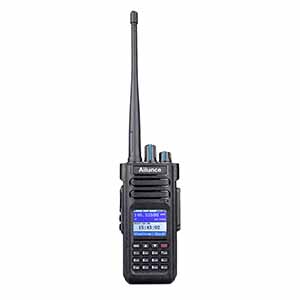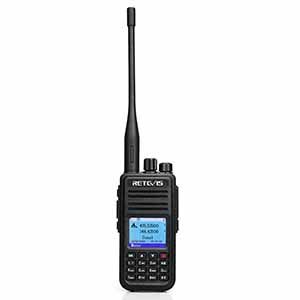Best dmr radio 2018

Best dmr radio 2018
WHAT IS DMR?
DMR stands for Digital Mobile Radio and is an international standard that has been defined for two-way radios. The DMR standard allows equipment developed by different manufacturers to operate together on the same network for all the functions defined within the standard.
The aim of the DMR standard was to create a digital radio system with low complexity and low cost that still allows for equipment from different manufacturers to work together, allowing users to shop around rather than being locked into a proprietary system which would be costly to replace and maintain.
The European Telecommunications Standards Institute (ETSI) is responsible for the creation and maintenance of the DMR standard. The standard was first ratified in 2005 and has subsequently been updated and revised several times, most recently in November 2018.
What frequency does DMR equipment work on?
Digital Mobile Radio works between the frequencies of 30 MHz (Megahertz) and 1000 MHz, also known as 1 GHz (Gigahertz). This range of DMR frequencies is divided into two categories:
- Very High Frequency (VHF) - Range between 30 MHz and 300 MHz
- Ultra High Frequency (UHF) - Range between 300 MHz and 1 GHz.
From these ranges, most DMR equipment falls into the 136 - 174 MHz and 403 - 527 MHz parts of the spectrum. Each country has its own organisation tasked with allocating licences, but some DMR frequencies are allocated as licence-free (for DMR Tier I) while others require a licence to operate.
Do I need a licence for DMR equipment?
The short answer is “it depends”. If you have a small number of users and basic communication requirements you may be happy to use DMR Tier I (see what are DMR tiers?) radios which do not require a license and are simple to use. It should be noted that Tier I equipment has a shorter range and are susceptible to interference from other users. If you require a more complex system you will need to apply for a licence from the frequency licencing body in your country.
Best DMR Radios
After trying and testing different dual frequency digital mobile radios, we have come to the conclusion that the HD1 is by far the best DMR radio you can buy. However, we have also selected some other options that are worth buying considering the affordability factor and different use cases. Here is a list of DMR Featured Stations.
Ailunce HD1

For Ailunce HD1, it is a hot model for a long time. HD1 has a very long standby time, so the amateurs will not be worried about the battery out of power. And it is a very all-around radio, you can use the radio write frequency, connect to the repeater, send a position using the GPS function or use HD1 to communicate with the space station. Dual-band, dual-time, you will experience the power functions of HD1.
Retevis RT3S

Retevis RT3S is also an FPP radio, the users can do many things as HD1. RT3S dual band digital radio uses Digital Mobile Radio (DMR) Tier 2 Standard protocol. It is compatible with the popular MOTO TRBO series Tier I and II using standard encryption, It is also compatible with any existing analog two-way radio operating on the supported UHF and VHF frequencies for easy migration to digital technology.






